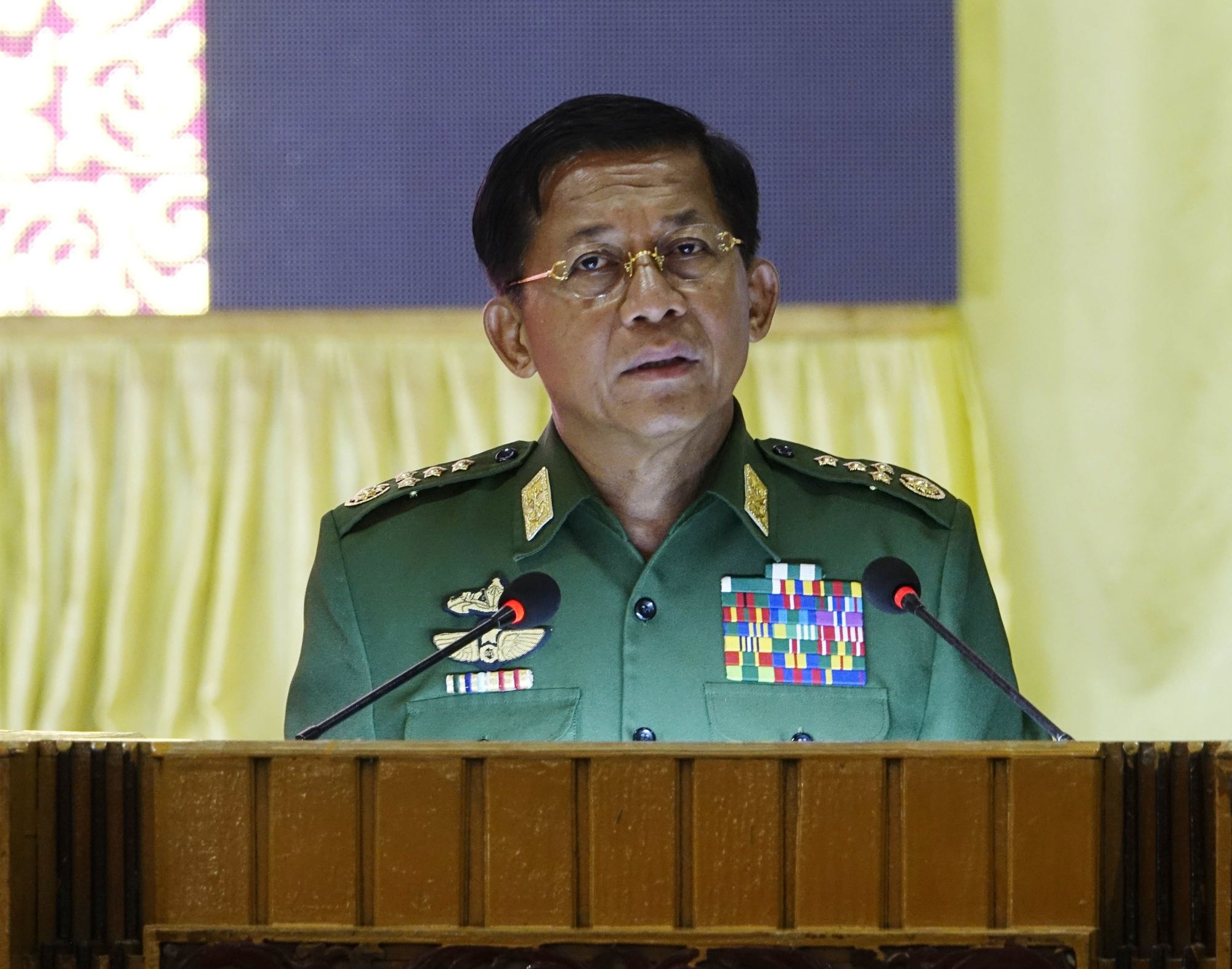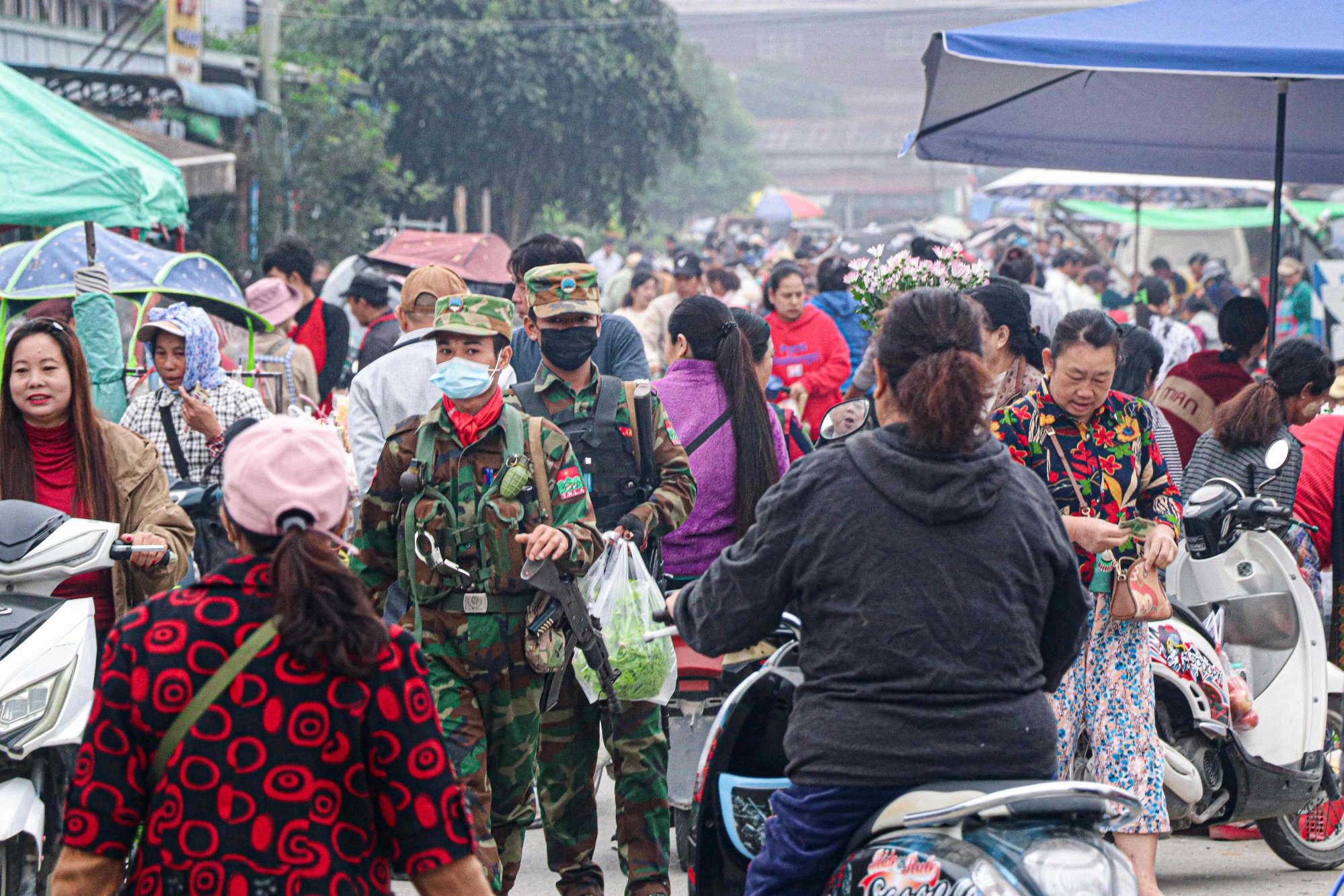
Explainer | Could Myanmar’s military be deposed by armed groups fighting across the country?
- The junta is facing its gravest challenge to date after armed groups launched coordinated attacks in Shan State
- There has been speculation on whether the attacks had the tacit support of China, which has called for the protection of its citizens
Over 200,000 people have been displaced so far in the affected regions, according to the UN, as fighting between the military and various armed groups escalates across the country.
To the pro-democracy rebels who have opposed the junta through years of guerilla combat, these ripples are fast becoming a wave, which will soon consume a loathed military that seized power in a 2021 coup.
But the military, led by Commander-in-Chief Min Aung Hlaing, has shown its ruthless reflexes to maintain power time and time again, razing villages and killing indiscriminately when it strikes back.
The days ahead are fraught with uncertainty, experts say, but one thing is clear: the junta now faces its gravest challenge yet.
What is Operation 1027’s ultimate aim?
On October 27, a trio of ethnic armed groups under the banner of the Three Brotherhood Alliance launched a coordinated attack against Myanmar’s junta forces in northern Shan state. The region, next to China’s Yunnan, is a gateway for billions of dollars of trade and a base for some of the country’s most nefarious criminal enterprises, from drugs and human trafficking to scam centres.
Two of the Brotherhood’s members, the Ta’ang National Liberation Army (TNLA) and the Myanmar National Democratic Alliance Army (MNDAA), have long contested parts of Shan state. The third member, the powerful Arakan Army, emerged from western Rakhine state but has allied with the Brotherhood in the northeast.
Although the Brotherhood supports the pro-democracy rebellion and the National Unity Government, it had largely avoided moving openly against the regime since the 2021 coup.
Operation 1027 has changed the game, with the Brotherhood seizing control of key border towns, closing scam dens – loathed by Chinese authorities – and seizing mortars, rifles and even mobile rocket launchers from their defeated foe.

The Brotherhood has said that it aims to not only defend its territory but also for the movement to expand nationally and eradicate the “oppressive military dictatorship”. It has also specified that it seeks to close down the cyber scam networks, staffed by thousands of Chinese citizens as well as young people from across Asia and beyond.
“The original intention of our crackdown on the scam networks is to ensure the release and return of Chinese victims,” Li Jiawen, a spokesman from the MNDAA, told This Week in Asia.
“They are out of the tiger’s mouth,” he said, adding all rescued scam workers – many of whom have been trafficked and forced to work – will be protected.
How bad is it for Myanmar’s junta?
The junta’s territorial losses are reportedly severe. The Brotherhood has control of large parts of north Shan, claiming to have captured over 150 military posts as well as arterial roads and key towns, though their claims cannot be independently verified.
These include Chin Shwe Haw and Kunlong, two big towns along the China-Myanmar economic corridor. Fighting is intensifying around Lashio, north Shan’s largest town and Muse, another major border hub. Meanwhile, Brotherhood forces are closing in on Laukkaing, a hotbed of scamming activity and a key target of the offensive.
Myanmar opposition needs global help to win war as junta faces multiple setbacks
Triumphant social media updates by the Brotherhood show its troops hoisting flags at captured bases and posing with caches of seized weapons, though the group has remained silent about its own casualties. In its propaganda war, Myanmar military or local militia affiliates are shown surrendering en masse.
The fighting is metastasising across the rest of Myanmar as other resistance groups, energised by the Brotherhood’s progress, have carried out operations from Chin state near the India border to the west, Kayah to the southeast, and across the central Sagaing region. Clashes have also spread to Mandalay, previously believed to be firmly within junta hands.
Crucially, fighting is also happening in western Rakhine, the Arakan Army’s historically conflict-ridden home state near Bangladesh, breaking a year-long ceasefire between the battle-hardened ethnic armed group and the military there.
That reopened front is a “nightmare for the Tatmadaw [Myanmar military]”, said Zachary Abuza, a Southeast Asia expert at the National War College in Washington DC. The military “has never had to fight on so many fronts at once,” he added.
Myanmar junta holds children hostage as ‘collective punishment’ for resistance
While the junta has launched fierce retaliatory air strikes and imposed martial law across eight Shan townships, there are signs it is deeply worried about how to contain the surging resistance.
On Thursday, the junta ordered all public servants and people with military experience to prepare to serve in an emergency, with a spokesman conceding that its forces were under “heavy assaults from a significant number of armed rebel soldiers”.
What’s China’s role in all this?
China wants the scams operated by and targeting its citizens along its border to be closed down. To that end, speculation has swirled over whether Operation 1027 was tacitly endorsed by Beijing, a key ally of Myanmar’s isolated military government, its main trade partner and a neighbour with pull among the ethnic Chinese armed groups along its border.
In the three weeks since Operation 1027 began, China has sent two high-ranking ministers to meet junta officials, calling on its neighbour to restore order and protect Chinese citizens.
The UN estimates that as many as 120,000 people, mostly Chinese nationals, have been trafficked into slavery by crime syndicates operating in collusion with the junta.

In September, Chinese authorities issued arrest warrants for two top officials from Shan State and detained high-profile individuals it accused of running scam syndicates while the group was on a visit to Yunnan.
On Thursday, three members of a prominent family from Kokang, a region in Shan state, were arrested by local police and handed to the Chinese authorities, all within days of China issuing bounties for the group over similar allegations. A fourth member, patriarch and kingpin Ming Xuechang, allegedly killed himself rather than be taken into custody, according to Chinese state media.
Unless Operation 1027 could show it could serve Chinese interests, the rebels “would have risked strong Chinese disapproval and possible prevention of such an attack on its border”, according to an analysis by the United States Institute of Peace.
Although the Brotherhood has not said whether it is acting with China’s support, it is part of a seven-member coalition of ethnic armed groups with close ties to China.
MNDAA’s Li said freed victims are currently being sent back to China across both junta- and Brotherhood-controlled territory, although an estimated 30,000 to 50,000 still remained in Laukkaing as of last week.
Could this spell the end of the junta?
It is impossible to say for now. The rebellion may gain enough momentum nationwide to topple an overstretched junta, whose forces are beleaguered by years of bloody operations targeting its own people. While analysts have avoided drawing definite conclusions so far, they say the military is struggling badly.
But it is also heavily armed – by Russia and China among others – and draws on bases across the vast and difficult terrain of Myanmar.
Significantly, the junta is now on the cusp of losing “upwards of 40 per cent of cross-border trade” along with its share of scamming revenues and access to supply lines, according to the USIP report, in what could mark “a turning point in the national struggle against military rule”.
Morgan Michaels, a Myanmar analyst at the International Institute for Strategic Studies, said “the key thing to watch for is whether the regime’s soldiers retain their will to fight”.
But it is also anyone’s guess as to what comes next if the junta implodes. The willingness of Min Aung Hlaing’s deputies to potentially topple the junta figurehead or fight on is unknown, while the array of armed ethnic groups have territorial claims which have never been resolved. Re-energised People’s Defence Forces, anti-coup units of civilians turned pro-democracy rebels, may yet play a pivotal role in wearing down the military in key areas after years of bloody stalemate.

